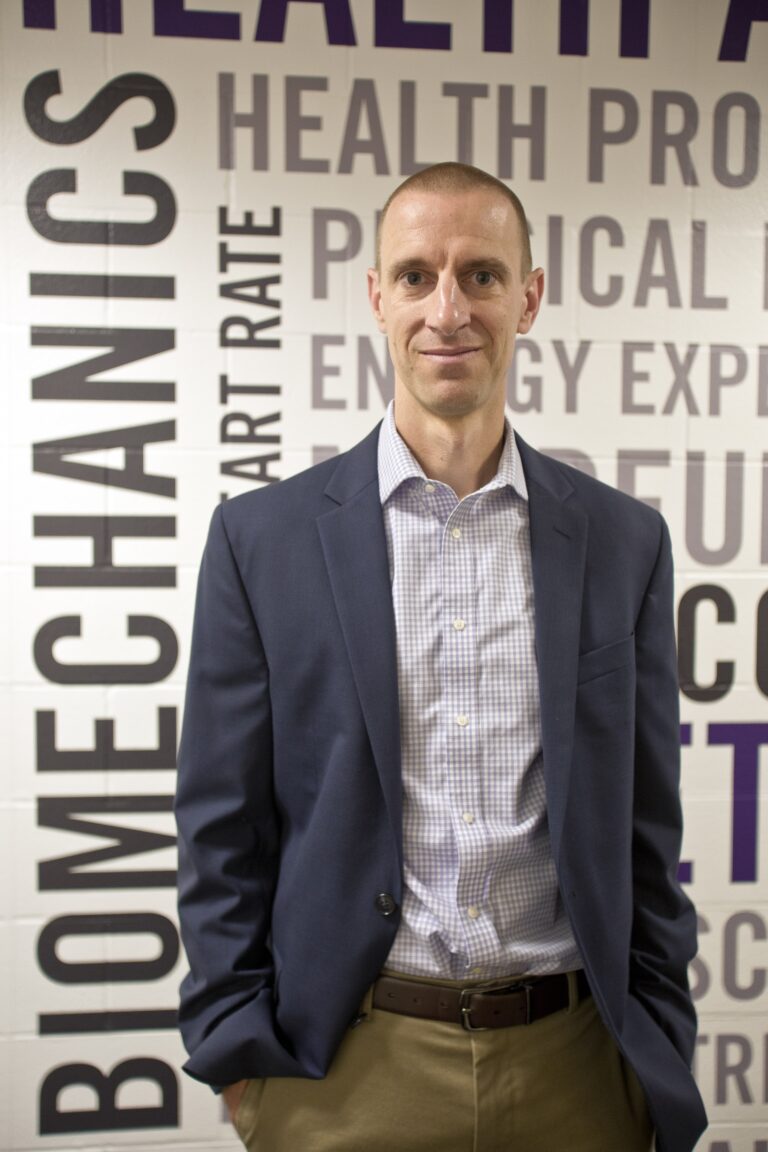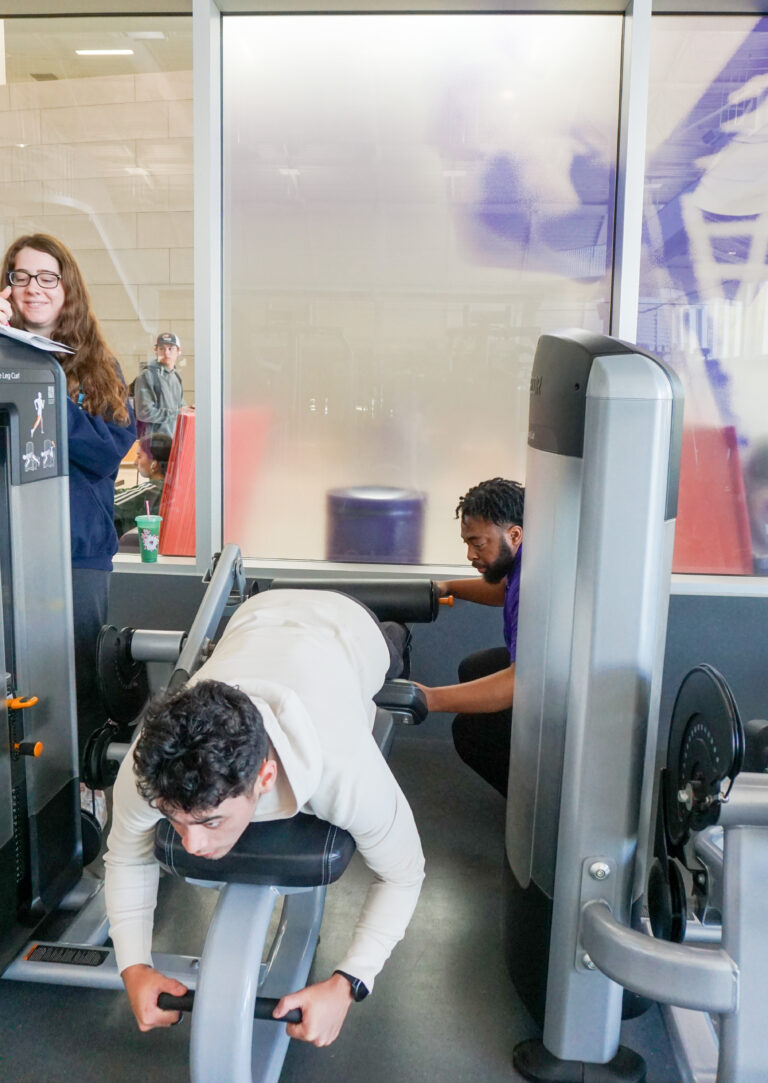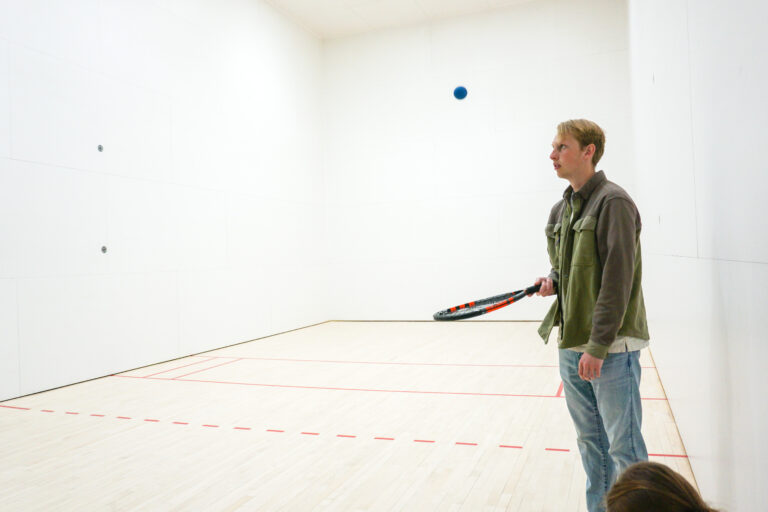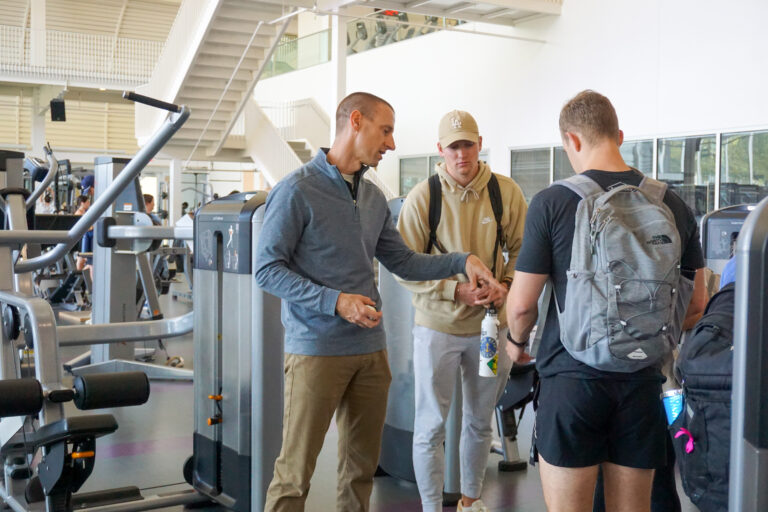
How does one connect human anatomy with exercise and everyday movements? Adam King, Ph.D., associate professor of kinesiology at the Harris College of Nursing & Health Sciences, aims to do just that through his Biomechanics course.
“We all produce movements, whether going about our daily tasks or if you’re an athlete,” said King. “The concepts of biomechanics help us understand the movement techniques used across the entire life span.”
Biomechanics is the physics-based study of how the human body moves and interacts with external forces. Breaking down the course name “bio-mechanics,” King likes to emphasize the biological elements of movement while helping students apply the mechanics part to various movements. By the end of the course, students know how to develop therapeutic exercises and use equipment, such as force plates and electromyography, to improve the body’s musculoskeletal functioning.
“This course helped me understand the different mechanisms that allow the body to produce force and function in the most efficient manner and how biological movements impact objects in our surroundings. When looking into my future as a physical therapist, understanding the physics that occur within the body will allow me to help patients maximize their body’s capabilities for their desired movement outcomes.” – Karlie Vinceri, Kinesiology major, physical therapy track
Students Become Movement Specialists

A required component in almost every kinesiology or exercise science program in the U.S., Biomechanics is a course where students, or as King refers to them, movement specialists, are equipped to work in health industries such as physical education, sports medicine, occupational or physical therapy and exercise physiology. King stresses that “understanding the factors leading to performance improvement and injury recovery from exercise and sport is very applicable to every student’s future careers.”
With a strong focus on applying concepts to sports and rehabilitation exercises, King uses a unique Team-Based Learning approach that provides students with opportunities to work in teams and collaborate on various application activities. As a result, students with diverse backgrounds and varying future careers come together within teams to better understand the concepts of Biomechanics and provide others with different perspectives.
“The structure of this course encourages team-based learning allowing open communication of perspective and knowledge between team members. I really enjoyed this approach! I feel that my perspective and learning were enhanced and broadened.” – Alyssa Oh, Movement Science major
Modeling movements like strength training exercises, rehabilitation movements or sport-specific tasks provide students with opportunities to practice movement instruction using the proper terminology to prepare them to instruct or coach a client in a real-life scenario. Students also make a trip to the TCU Campus Recreation Center, where they learn how to properly adjust various settings on exercise equipment to understand torques and muscle activity better and promote safe exercise practices.
“I now see movement as a series of events as opposed to a fluid movement. I aim to have a career in strength and conditioning and Biomechanics taught me how to prevent injuries and optimize movement patterns – knowing how joints move and what their most efficient range of motion is vital.” – Parker Hughes, Health & Fitness major
The Big Project

The Motion Analysis Project allows students to use specialized software to analyze a movement pattern of their choice, then present the data and make connections to research and biomechanics concepts. Some of the topics used to understand movement techniques include a soccer throw-in or corner kick, a football snap, a tennis serve or forehand stroke, jumping and landing, a swimming start off the block and even various ballet jumps like the Grand Jete and Sissonne leap.
“Seeing how the teams develop and work together is always inspiring,” said King. “They come up with some really cool ideas and make new friends along the way.”
“I loved the Motion Analysis Project at the end of the semester. It allowed me to apply what I learned about force, velocity, acceleration, form cues and optimal movement patterns to a specific sports movement more in-depth.” – Alyssa Oh

King also enjoys witnessing the change in how students think about biomechanics and movement. “A lot of them don’t realize the extent to which this course applies to their life, said King. “They begin to think differently about the exercises they perform in the Rec Center or how they witness patients moving when doing clinical observations.” Students often comment on how relevant the topics are for their desired career paths.
“Biomechanics has direct correlations with the engineering of medical devices used by patients in a variety of settings and what I learned in this course will aid me as I interact with other health care professionals when I enter the workforce.” – Diego Rivera, Kinesiology major
Wondering what you can do with a Movement Science degree?
Physical Therapist
#3 in Best Health Care Jobs, U.S. News & World Report
#6 in 100 Best Jobs, U.S. News & World Report
$95,620 Median Salary, U.S. News & World Report
The Bureau of Labor Statistics projects a 16.9% employment growth for physical therapists between 2021 and 2031.
Occupational Therapist
#20 in Best Health Care Jobs, U.S. News & World Report
#72 in 100 Best Jobs, U.S. News & World Report
$85,570 Median Salary, U.S. News & World Report
The Bureau of Labor Statistics projects a 13.9% employment growth for occupational therapists between 2021 and 2031.
Physical Education Teacher
$61,480 Median Salary, Salary.com
The U.S. Bureau of Labor Statistics projects an 8% employment growth for physical education high school teachers.
Exercise Physiologist
$56,586 Median Salary, Salary.com
The U.S. Bureau of Labor Statistics projects a 9% employment growth for exercise physiologists from 2021 to 2031.
Athletic Trainer
$52,739 Median Salary, Salary.com
The U.S. Bureau of Labor Statistics projects a 21% employment growth for athletic trainers between 2014 and 2024.
Did you know? TCU is rated #21 Best Colleges for Kinesiology and Physical Therapy – Niche.com Learn more about Movement Science.